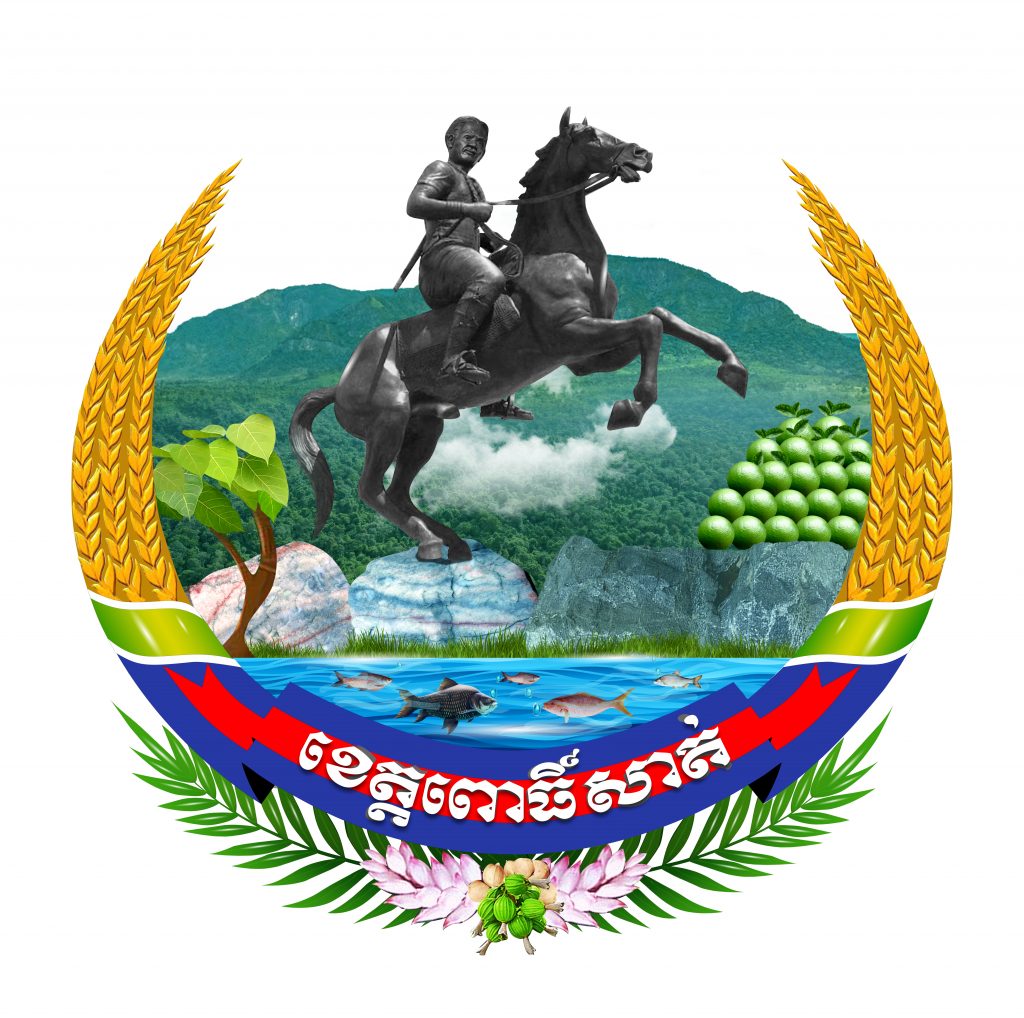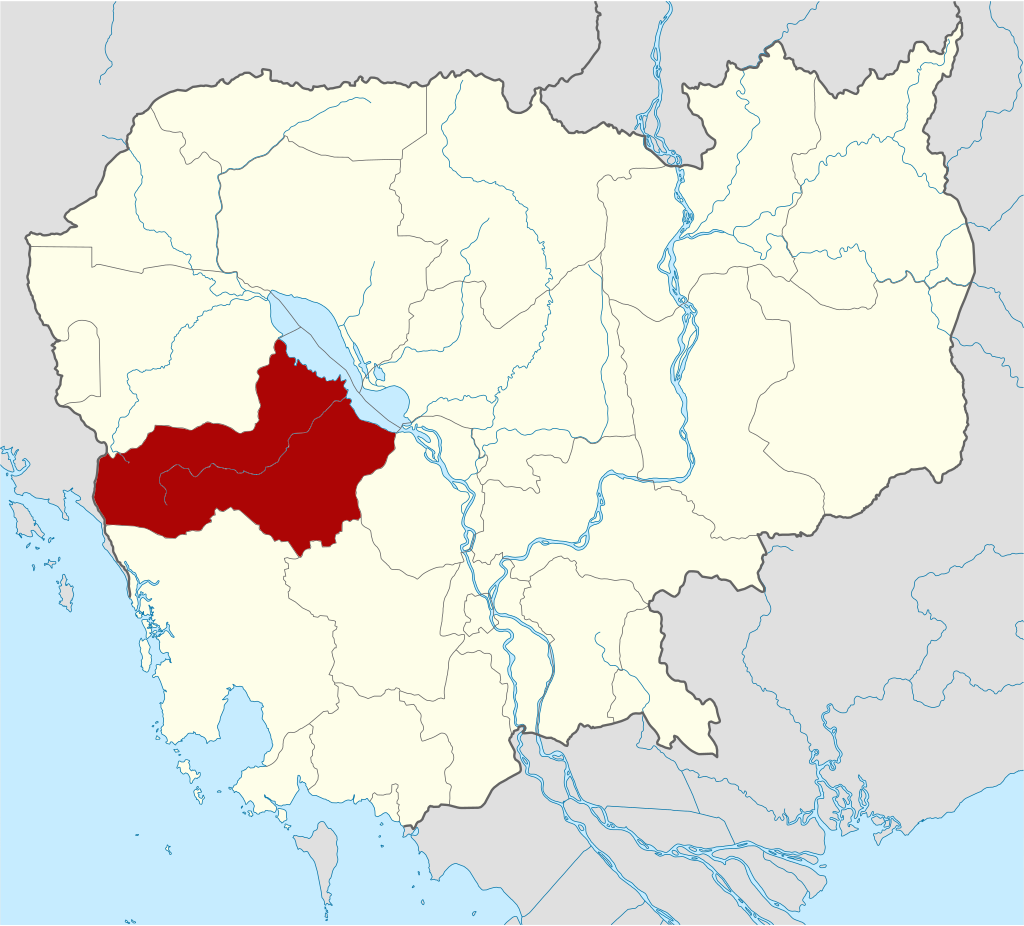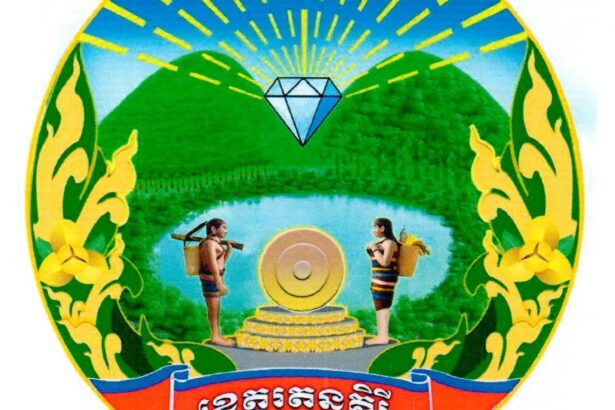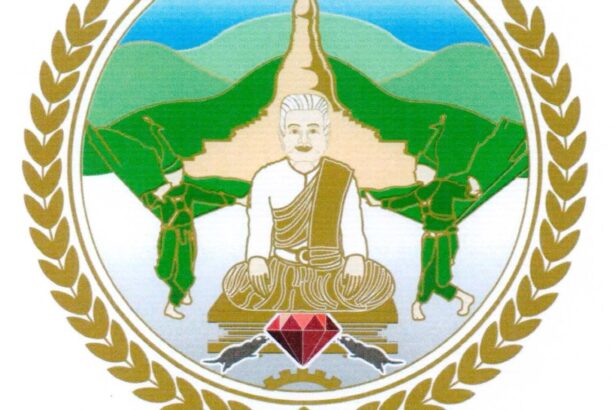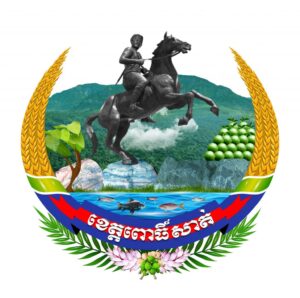
Pursat is one of the western provinces of Cambodia which is 186 kilometers from Phnom Penh along National Road 5. Province, covering 12,692 square kilometers. Its neighboring provinces are (from north clockwise) Battambang province to the north, the Great Lake to the east, Kampong Chhnang to the southeast, Kampong Speu province the south, Koh Kong to the southwest, and Border of Thailand to the west.
Present Day, the province is divided into 6 administrative districts and 1 municipality, Pursat City. The province has one international border gates, the Thmor Da checkpoint and the other two regional checkpoints, the Phnom Roeussey and Chey Chumnas gates. With over 410,000 people, the province is Cambodia’s fourth largest area and fourteenth populous. It is known for historical sites, agricultural economy, and developing infrastructure.
History
Pursat Province is one of the provinces in Cambodia, located in the western part of the country. Its history is deeply intertwined with the broader history of Cambodia, including the rise and fall of ancient empires, colonialism, and modern developments. Here’s an overview of the history of the Province:
Pre-History or Early History Period
Province’s history dates back to the pre-Angkorian and Angkorian periods, when the region was part of the Khmer Empire. The province likely played a role in the agricultural and trade networks that sustained the empire. Evidence of ancient settlements and temples scattered throughout the province indicates its historical significance.
During the height of the Khmer Empire, Pursat was likely under the influence of Angkor, the empire’s capital. The province’s rivers, particularly the Pursat River, would have been vital for transportation and irrigation, contributing to the empire’s wealth and power. Some ancient temples and artifacts found in Pursat date back to this period, reflecting its importance within the empire.
Post-Angkor Period
After the decline of the Khmer Empire in the 15th century, Pursat, like much of Cambodia, experienced periods of decline and political instability. The region fell under the influence of various regional powers, including the Siamese (Thai) and Vietnamese, during different periods. This era was marked by conflicts and shifting control, which affected the stability and development of the region.
Colonial Period
In the 19th century, Cambodia, including Pursat Province, came under French colonial rule. The French established infrastructure, including roads and railways, which connected the province to other parts of Cambodia. However, the colonial period also saw the exploitation of Cambodia’s resources and the imposition of French culture and administration. The Province during the reign of King Sisowath Monivong (1927-1941) was divided into the following districts and regions:
- Chao Vai Khet “ចៅហ្វាយខេត្ត” (Provincial Governor): Oknha Soukrea Lok Indra Rithvichit Sakda Mahanikum Dharaninsak Akka Moha Sena Mahamat Udomkrampahu “ឧកញ៉ាសួគ៌ាលោកឥន្ទ្រាឫទ្ធិវិជិតសក្ដាមហានិគមធរណិន្ទស័ក្តិអគ្គសេនាមហាមាត្យឧត្ដមក្រមពាហុ”
- Phu Chuy Khet “ភូឈួយខេត្ត” (Vice Provincial Governor): Sokea Sam Sak “សុគ៌ាសមសក្តិ”
- Ballat Khet “បាឡាត់ខេត្ត”: Pbipheak Roeung Rith “ពិភ័ក្ដិរឿងឫទ្ធិ”
- Chao Vai Srok Bakan “ចៅហ្វាយស្រុកបាកាន” (Governor of Bakan District): Sourkea Thibpdei “សូគ៌ាធិបតី”
- Ballat Srok Bakan “បាឡាត់ស្រុកភ្នំពេញ” (Ballat of Bakan District): Pbiphoat Reachea Sangkream “ពភ័ត្តរាជាសង្រ្គាម”
- Chao Vai Srok Sambo “ចៅហ្វាយស្រុកបាកាន” (Governor of Sambo District): Pinith Roeung Rong “ពិនិត្យរឿនរង្គ”
- Chao Vai Srok Kror Vainh “ចៅហ្វាយស្រុកក្រវាញ” (Governor of Kror Vainh District): Akranh Thibpadei “អរញ្ញធិបតី”
- Chao Vai Srok Kror Kor “ចៅហ្វាយស្រុកក្រគរ” (Governor of Kror Kor District): Chonis Sangkream “ជំនិះសង្គ្រាម”
- Ballat Srok Kror Kor “បាឡាត់ស្រុកក្រគរ” (Ballat of Kror Kor District): Pichit Sangkream “ពិជិតសង្គ្រាម”
- Chao Dambon Chamnot “ចៅតំបន់ចំណត់” (Governor of Chamnot Region): Aranhoeuk Sena “អារញ្ញិកសេនា”
Independence and Conflict Period
Cambodia gained independence from France in 1953, and Pursat Province became part of the newly independent kingdom. The post-independence period was marked by political turmoil, including the rise of the Khmer Rouge regime in the 1970s. Pursat, like other provinces, suffered during this dark period, with widespread violence, forced labor, and the decimation of the population.
After the fall of the Khmer Rouge in 1979, Pursat Province, along with the rest of Cambodia, began the slow process of recovery. The province has since seen development efforts, particularly in agriculture, which remains the backbone of its economy. The introduction of irrigation projects and infrastructure development has helped improve the standard of living in Pursat.
Modern Day (Peace Process to Present Day)
Today, the Province is known for its natural beauty, including the Cardamom Mountains and Tonle Sap Lake, which are significant for both biodiversity and tourism. The province’s economy remains largely agrarian, with rice farming being the dominant activity. In recent years, there has been an increasing focus on sustainable development and conservation, particularly in the context of preserving the natural environment and improving the livelihoods of the local population.
Overall, the Province’s history is a reflection of Cambodia’s broader historical trajectory, marked by periods of great achievement, colonial subjugation, conflict, and gradual recovery.
Dignitaries who were former governors of Pursat since 1993
There were 06 Governors of Pursat Province from 1993-Present, including:
- H.E. Ros Sreng (ឯកឧត្តម រស់ ស្រេង) 1993-1999
- H.E. Ung Sami (ឯកឧត្តម អ៊ុង សាមី) 1999-2003
- H.E. Khouy Sokha (ឯកឧត្តម ខូយ សុខា) 2009 – 2014
- H.E. Mao Thanin (ឯកឧត្តម ម៉ៅ ធនិន) 2014 – 2019
- H.E. Cheav Tay (ឯកឧត្តម ជាវ តាយ) 2021 – 2022
- H.E. Khouy Ryda (ឯកឧត្តម ខូយ រីដា) 2022 – Present
Geography
The Province, located in western Cambodia, is known for its diverse geography, which includes rivers, plains, mountains, and forests. Here’s a detailed look at the geography of the Province:
Topography: Province’s geography is diverse, ranging from lowland areas to mountainous regions. The central and eastern parts of the province consist primarily of flat plains that are part of the larger Tonle Sap basin. These plains are highly fertile and are predominantly used for agriculture, especially rice cultivation. The land here is crisscrossed by a network of rivers and canals, which are vital for irrigation. The western part of the Province is dominated by the Cardamom Mountains, one of Cambodia’s most significant mountain ranges. The Cardamom Mountains are known for their dense forests, rich biodiversity, and rugged terrain. The highest peak in the Cardamom Mountains, Phnom Aural, is also the highest point in Cambodia, standing at 1,813 meters above sea level. The mountains form a natural border with Thailand and are an important area for conservation.
Water bodies: The Pursat River is the main river running through the province. It originates in the Cardamom Mountains and flows through the central part of the province before emptying into the Tonle Sap Lake. The river is crucial for irrigation, supporting the province’s agricultural activities. The eastern border of the Province is defined by the Tonle Sap Lake, the largest freshwater lake in Southeast Asia. The lake is a vital resource for fishing, agriculture, and transportation. The floodplains of Tonle Sap are particularly fertile, making them crucial for rice production.
Climate: The Province has a tropical monsoon climate, characterized by two main seasons: Wet Season (May to October), this period is marked by heavy rainfall, particularly from the southwest monsoon. The wet season is crucial for agriculture, as it provides the necessary water for rice fields and other crops. Dry Season (November to April), the dry season sees significantly less rainfall, with temperatures often rising during the later months. The dry season includes a brief cool period from December to February.
Natural Resources, Vegetation and Land Use: The Province is rich in natural resources, particularly in its mountainous and forested areas. The Cardamom Mountains are home to extensive forests, which are vital for biodiversity and are habitats for various species, including endangered ones. These forests also play a critical role in water regulation and carbon sequestration. The fertile plains of the province are primarily used for agriculture, with rice being the dominant crop. Other crops, such as maize, cassava, and vegetables, are also grown. The province’s proximity to Tonle Sap Lake supports fishing as an important economic activity, particularly in the floodplain areas. In the mountainous regions, there are ongoing efforts to promote sustainable land use and protect the environment, particularly through the establishment of protected areas and conservation programs.
- Phnom Kravanh National Park (Cardamom Mountain National Park) covered area of 926,123 hectares (this is the total area sharing with Koh Kong, Pursat, Battambang and Preah Sihanouk)
- Aural Wildlife Sanctuary covered total area of 285,172 hectares sharing with Kampong Chhnang and Pursat
- Tonle Sap Lake Multiple Land Use covered area of 316,250 hectares. This is the total area sharing with Kampong Thom, Banteay Meanchy, Kampong Chhnang, Battambang, Pursat (50,385 hectares) and Siem Reap Provinces.
Administrative divisions
As of 2024, the province is divided into 1 municipality (Krong) and 06 districts (Srok), 07 Sangkat and 42 communes (Khum), and 526 villages. Based on Population Census of 2019, the total population is 419,952 people (female 215,780), the number of households is 102,253 households, and the density is 41 people/km2. Pursat municipality is the seat of government, commonly known Krong Pursat or Pursat City.
- Pursat Municipality (07 Sangkat)
- Bakan District (09 Khum)
- Kandieng District (09 Khum)
- Krar Kor District (11 Khum)
- Phnom Krorvanh District (06 Khum)
- Veal Veng District (05 Khum)
- Ta Lav Senchey District (02 Khum)
The provincial symbol is decaled by Ministry of Interior via a Prakas No.3471 BrK dated 14 August 2020 on the Establishment of Pursat Province Symbol. According to the provincial administration, “water, land, people and history” shows the rich natural resources for development, which starts from the diligence of the people in this favorable land, so a symbol of the province can define as below:
- The image of a man riding a horse with a sword represents the brave heroism of Duke Ponhea Sourkeak Lok Khleang Moeung, including his family, who willingly sacrificed their lives for the cause of the nation, motherland, religion, the King and a great example for the next generation to strive to protect and build a last-long and prosperous homeland.
- The image of Cardamom Mountain (background of Horse) is the name of a mountain in the province, rich in natural mineral resources, non-timber forest products, traditional medicine and a habitat for all kinds of wildlife. The Cardamom Mountains are a source of water for agriculture, handicrafts, industry, as well as a source of hydropower and a potential natural tourism area of the province.
- The image of the land or rock on which the horse stands represent the rich natural mineral resources of the province, such as the source of marble, which is the only stone in the Kingdom of Cambodia, a stone that is processed into various visual art product.
- Bayan Tree and and Pursat orange: Bayan tree represents the history of the name of the province, from the original word is (Pur-Rosat), has 12 leaves representing the mother virtue. Pursat oranges represent the fruits that firstly were grown during the French colonial period in Dob Bat village, Bakan district, Pursat province by the Orange Tree Research Station before 1863, and there are 21 fruits representing the father virtue.
- The surface of water and fish represents the Tonle Sap Lake, which is an important reservoir and a habitat for all kinds of fish, a biodiversity sanctuary, and to serve the living needs of the people throughout Pursat province.
- The image of rice husk in a circle of buffalo horns shows the diversity of rice crops that spread over a large area of agricultural land as a solid foundation for the national economy.
- The ribbon (red, blue and green) represents the nation that all the people in Pursat province restore and promote in the development of the nation in all areas.
- The letter “Pursat Province” states that the people of Pursat Province strictly respect and fulfill their duties to the motherland under the correct leadership of the Royal Government of Cambodia by taking refuge under the motto “Nation, Religion, King”.
- Cardamom is a plant that provides plants, flowers and fruits for use as food and medicine, which is famously for a long time with the name Cardamom Mountain range and Cardamom harvesting dance, etc.
Accessibility
- Road: Pursat is well-connected by road to other major cities in Cambodia, including the capital, Phnom Penh and others. The National Road No. 5 is a major highway passing through the province. This road is a major transportation route for goods and people.
- Railways: The province is also served by the Royal Railway Cambodia (Northern Line: Phnom Penh – Pursat and Battambang), which has been served daily passenger service since 2018.
- Waterway: Pursat can access by river cruise from Phnom Penh via Tonle Sap River and Tonle Sap Lake. They are important for local transportation, particularly in rural areas. However, it is not so popular among the travelers both domestic and international and there is no service operation.
Tourism Products
The Province, while less well-known than some of Cambodia’s other tourist destinations, offers unique attractions that make it an appealing destination for those interested in natural beauty, culture, and history. Here’s an overview of tourism in the Province:
Cardamom Mountains (តំបន់ភ្នំក្រវាញ)៖ The Cardamom Mountains, located in the western part of the Province, are one of Southeast Asia’s most significant and biodiverse regions. They are a prime destination for eco-tourism, offering opportunities for trekking, wildlife observation, and exploring remote villages. Visitors can discover pristine rainforests, waterfalls, and unique wildlife species, including endangered animals like Asian elephants, tigers, and various bird species.
The Lok Oknha Klang Moeung Lok Chumteav Khan Khiev monument (លោកឧកញ៉ា ឃ្លាំង មឿង និងជំទាវ ខាន់ ខៀវ), located in Kampeaeng Svay village, Snam Preah commune of Bakan district, commemorates Oknha Klang Moeung’s heroic contributions to the country. Every year, locals visit a sacred shrine to exercise their animism beliefs and pay respects to their ancestors or protectors.
Kampong Luong Floating Village (កំពង់ហ្លួងភូមិអណ្ដែតទឹក): it is a popular tourist destination for many foreigners to visit during the rainy season and One of the most accessible floating villages in Pursat, Kampong Luong is located near the border of Pursat and Battambang Provinces. It is an attractive natural site which also include the daily life of local people living on the floating village. Visitors can take boat tours to explore the village, which has houses, schools, and even shops floating on the water, flooded forest, fish conversation area, and many birds in the dry season.
Phnom Tum Por (ភ្នំទំព័រ): At 1551 meters, Phnom Tum Por is the third highest mountain in Cambodia after Aural Mountain and Samkos Mountain. There is also a protected area under the auspices of the Tum Por Village Protected Area Community, recognized by the Ministry of Environment and the Royal Government. This community is a starting point for travelers to kick off their hiking activities. The distance from Tum Por village to the first camp, we had to walk for about an hour and half to two hours, depending on the strength we had. The condition of the trail is a bit difficult due to it is very steep and slippery, especially when it rains. At the first camp compound, we could see the beautiful scenery. From the first to the second camp compound, it takes about 4 to 5 hours. The area of second camp compound is a thick, cold, and wet forest area. From the second camp to the mountaintop, it takes about 3 hours. At this stage, the condition of the trail is slightly difficult due to the density of the forest which is easy to be lost, slippery, and rich in insects. This is a wildlife and forest sanctuary surrounded by mountains, and this mountain is now listed as an ecotourism adventure in the forests of the Kingdom of Cambodia. Located at Tum Por village, Pramaoy commune of Veal Veng district, Phnom Tompor Mountain is situated on the Kravanh Mountain Range and is a sanctuary of rare species such as tiger, sambar, red muntjac, eld’s deer, etc. On the top of the mountain, there is beautiful natural scenery, dense forests, and it is sometimes covered by fog. Last but not least, it is a very good place for people who love nature, adventure activities and hiking.
L’Bak Kamronh Rapid (ទឹកធ្លាក់ល្បាក់កំរោញ): it is a kind of natural attraction site where there is a flowing of water all year round and allows tourists to visit the picnic farm, eat, swim and entertain on foot, etc., refreshing with small and large green plants (bamboo forest) along the waterfront provide a cool and chill atmosphere. Lbak Kamroon tourist site is located in Angkrang village, Samrong commune, Phnom Kravanh district, Pursat province, about 54 km from Koh Sampov Meas.
Wat Bakan or Bakan Pagoda (វត្តបាកាន): This is one of the oldest and most revered pagodas in Cambodia, dating back to the 11th century. Located in O Rumchek village, Trapeang Chorng commune of Bakan District, it’s a site of pilgrimage for many Cambodians. The pagoda complex includes ancient structures and modern buildings, providing a fascinating blend of history and contemporary religious practice. More importantly, all of the Buddha statues in this pagoda face to the west.
Veal Pagoda (វត្តវាល) is an old monastery in Pursat province with a vast compound that was created with a large garden and numerous statues telling the tale of the Trinity. It is located in Phsar Leu village, Lolok Sa commune of Pursat district. Inside the pagoda is a massive figure of Buddha, and it serves as a place of prayer for Buddhists.
Pursat Museum (សារមន្ទីរខេត្តពោធិ៍សាត់): Exhibited at the Pursat Museum are archaeological relics that have been gathered from various locations. These artifacts are well-secured and available to both domestic and foreign visitors. It is situated in Pursat City’s Sangkat Phteah Prey.
Sampov Meas Island (កោះសំពៅមាស): One of the artificial tourist destinations in the center of Pursat is Sampov Meas Island, which is situated in the middle of a lake. It is adjacent to a holy place and features ample room for a playground and a gym. Located at the village of Peal Nheaek Pir, Sangkat Phteah Prey of Pursat City, Koh Sampov Meas is a wonderful place for locals to visit and relax, as well as tourists from here and there. Especially at night, Koh Sampov Meas shines brightly like a gem.
Pursat Town (ក្រុងពោធិ៍សាត់): The provincial capital, Pursat town, is a quiet and pleasant place to explore. It’s a good base for visiting the surrounding attractions and offers a few notable sites, including: Wat Preah Sdei: A significant local pagoda, known for its beautiful architecture and serene atmosphere; Pursat River Promenade: A scenic spot in town, perfect for an evening stroll along the river; Pursat Marble: Pursat is known for its high-quality marble, and the province has a long history of stone carving. Visitors can tour local workshops to see artisans at work and purchase marble sculptures, statues, and other crafts as souvenirs.
Mountain 1005 (ភ្នំ១០០៥) is well known with beautiful natural scenery and abundant forests, especially the new curved road in the mountain (the National Road 55 which was inaugurated on March 9, 2020). Moreover, Mountain 1005 has cool weather and the road through here is serpentine with a beautiful view on all sides. During the rainy season, tourists can see the dense mist from the top of the mountain. It is located in Dei Kraham village, Anlong Reab commune, Veal Veaeng district, Pursat province.
Thmor Da Touch Waterfall (ទឹកធ្លាក់ថ្មដាតូច): It is a resort next to the eel-shaped road near the 1500 mountains and sometimes called “1500 waterfalls”. We descend from the eel-shaped road about 100 meters away and see the view of clear water flowing on the slopes of the mountain in layers, like a staircase accompanied by the beauty of the mountain forest as a paradise. Located Aekapheap village, Tmor Da commune of Veal Veng district, this 30-meter-high waterfall falls all year round surrounded by lush green forest and mountain rocks.
Osoam Cardamom Community Center (អូរសោម): Located in Osoam commune of Veal Veng district about 153 kilometers from Pursat town, it is a storehouse of natural resources that is very suitable for adventurers. From there, you can take a cool dip in the water, take a boat ride or kayak along the vast lake and watch the sunset, hike the mountains, set up tents and admire the flora and fauna of the area, particularly, there is a crocodile sanctuary. This site, located within the Cardamom Mountains, offers homestays, guided treks, and opportunities to learn about local conservation efforts. It’s a great base for exploring the mountains and experiencing the traditional lifestyle of the local people.
O Da Waterfall Natural Resort (រមណីយដ្ឋានបែបធម្មជាតិទឹកធ្លាក់អូរដា): About 56 kilometers from city of Pursat, it is a beautiful and picturesque waterfall that originates from the Arai River on the ridge of the Aural Mountains. Located in Rokat commune of Phnom Kravanh district, the waterfall is surrounded by a lush green forest, mountain rocks, and has water flowing all year round. This site is divided into three sections. The upper part is the originate of the waterfall which is not able to bathe. The middle part is the most popular place for tourists due to it flows on the rocks with a flat surface and a shallow depth to bathe at will. The lower part is a strong whirppol which is not able to bathe.
Chhay Proy Waterfall (រមណីយដ្ឋានទឹកធ្លាក់ឆាយប្រុយ) is a natural attraction site that has a deep, clear waterfall, located not far from Osaom downtown, about 30 kilometers. If you travel from Koh Kong province to Pursat province through the Cardamom Mountain range, you can easily access this site. The waterfall is 50m high and has a boulder surrounded by the mountain view, with many different types of birds. Many tourists visit and swim here. It is located Chhay Louk village, O Saom commune of Veal Veng district.
Veha Da Angkrey, Stung Porpok (វេហាដាអង្គ្រៃ ស្ទឹងពពក): this is a very interesting place, which is 70 kilometers away from Pursat provincial town and is located in Reang Khvav community, Ksetr Borey village, Sontrae commune of Phnom Kravanh district. Visitors have to continue hiking for more than 9 kilometers to reach the top of the mountain, which is full of river of cloud, especially visitors are able to see the sunrise and sunset. For clouds, it is more or less depending on the weather. It is a nice place for adventurers, where is a space for camping.
Chrak L’ eang Waterfall (ទឹកធ្លាក់ច្រកល្អៀង): about 73 kilometers from downtown Pursat, 41 kilometers from Krakor district town and 195 kilometers from Phnom Penh, this 10-tier waterfall, that flows all year round with cool water, is one of the most beautiful waterfalls in Bamnak village, Chheu Tom commune, Krakor district of Pursat province because it is a tourist area rich in natural scenery, waterfalls and lush green forests. This natural site covers an area of 150 hectares with rich forests that are habitats for many kinds of wildlife. With attractive weather, it is suitable for camping and safety at all times. What’s more, there are vendors selling local food and a variety of agricultural products to guests.
“Phnom Neak Sar” Natural Cultural and Historical Resort (រមណីយដ្ឋានវប្បធម៌ប្រវត្តិសាស្ត្រធម្មជាតិ “ភ្នំនាគ ស”) is located in Kbal Damrey Village, Ansa Chambok Commune, Krakor District, Pursat Province, 59 km from Pursat City and 12 km from National Road 5 (Red dirt Road). The resort is located at the foot of a mountain and is adorned with flower gardens, Buddhist gardens and attractive natural forest trees, as well as fresh air of rural mountain scenery. “Phnom Neak Sar” allows tourists to sit and enjoy the view from the top of the mountain with pleasure. In addition to the existing nature, the mountain is also arranged as a colorful flower garden, highlighted by large rocks, as well as a variety of wildlife statues and statues of the Buddha. Next, we go to the “Hidden Temple (ប្រាសាទបិទពួន)”, which has large rocks stacked on top of each other in many layers (next to this mountain) and drifted to the “Toek Thmor Samleang (ទឹកថ្មសំលៀង)” which has cold water flowing on the big rocks in the rainy season.
Pursat has a diverse array of tourism service providers that cater to the needs of visitors, offering everything from guided tours and transportation to accommodation and dining. Below is an overview of the main types of tourism service providers in the city:
Accommodation: The province’s tourism infrastructure is still developing, with accommodations ranging from basic guesthouses to more comfortable hotels. The relatively low level of tourist traffic makes Pursat an excellent destination for travelers seeking an off-the-beaten-path experience. There are 7 places of hotels (equally 372 rooms) and Guesthouse is 71 places (equally 801 rooms).
Restaurants and Eateries: Local Restaurants and Cafés offer a variety of International and Cambodian dishes, from normal appetizer to fine dining service. Moreover, Street Food offers an authentic way to experience local cuisine, with vendors selling snacks and meals at markets and along the streets.
Transportation Services: Local transportation options, including auto-rickshaw and manual-rickshaw and Moto-taxis, public bus are common and affordable modes of transport for short distances and local travel. Moreover, Car and Bike Rentals are also available for those who prefer to explore the city at their own pace. Additionally, regular bus and mini-bus services connect to provinces from Phnom Penh and nearby provinces.
Other activities:
- Krakor District and the Tonle Sap Lake: Krakor District, located on the eastern edge of Pursat Province, borders the Tonle Sap Lake, the largest freshwater lake in Southeast Asia. The district is known for its stunning landscapes and is a great spot for birdwatching, especially during the wet season when the lake expands significantly. Moreover, the wetlands around Tonle Sap are a haven for birdwatchers, with opportunities to see species like the spot-billed pelican, greater adjutant, and various storks. The lake’s floodplains are part of the Tonle Sap Biosphere Reserve, recognized for its ecological importance.
- Community-based tourism initiatives in Pursat Province aim to provide visitors with authentic experiences while benefiting local communities. These initiatives often include homestays, cultural exchange programs, and involvement in local activities such as farming or crafts.
- Adventure and Eco-Tourism: Given its varied landscape, Pursat offers several opportunities for adventure tourism. Besides trekking in the Cardamom Mountains, there are options for mountain biking, camping, and river-based activities like kayaking.
- Local Markets and Crafts: Exploring the local markets in Pursat town and other districts offers a taste of daily life in the province. Visitors can find fresh produce, traditional Khmer food, and local crafts. The province is particularly famous for its marble products and wooden carvings.

